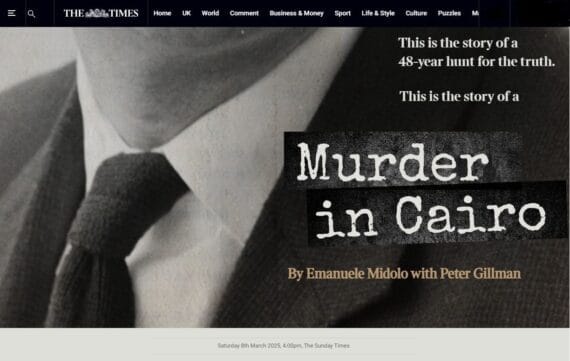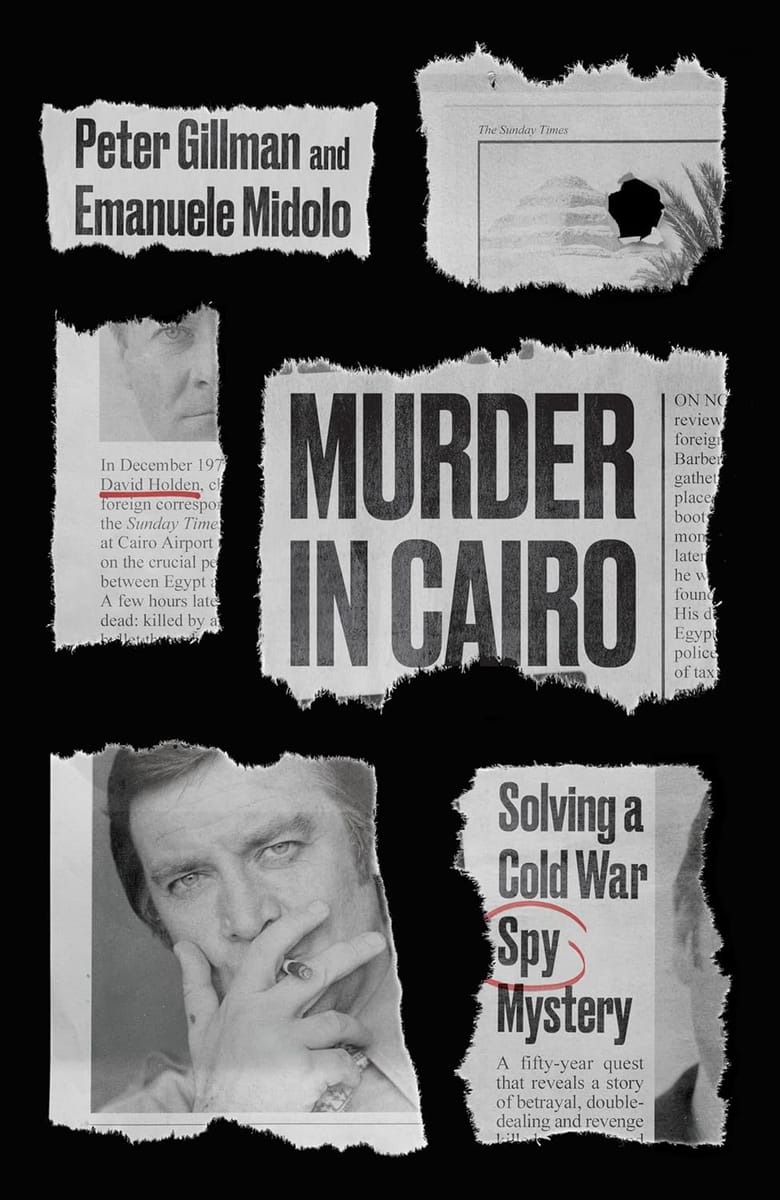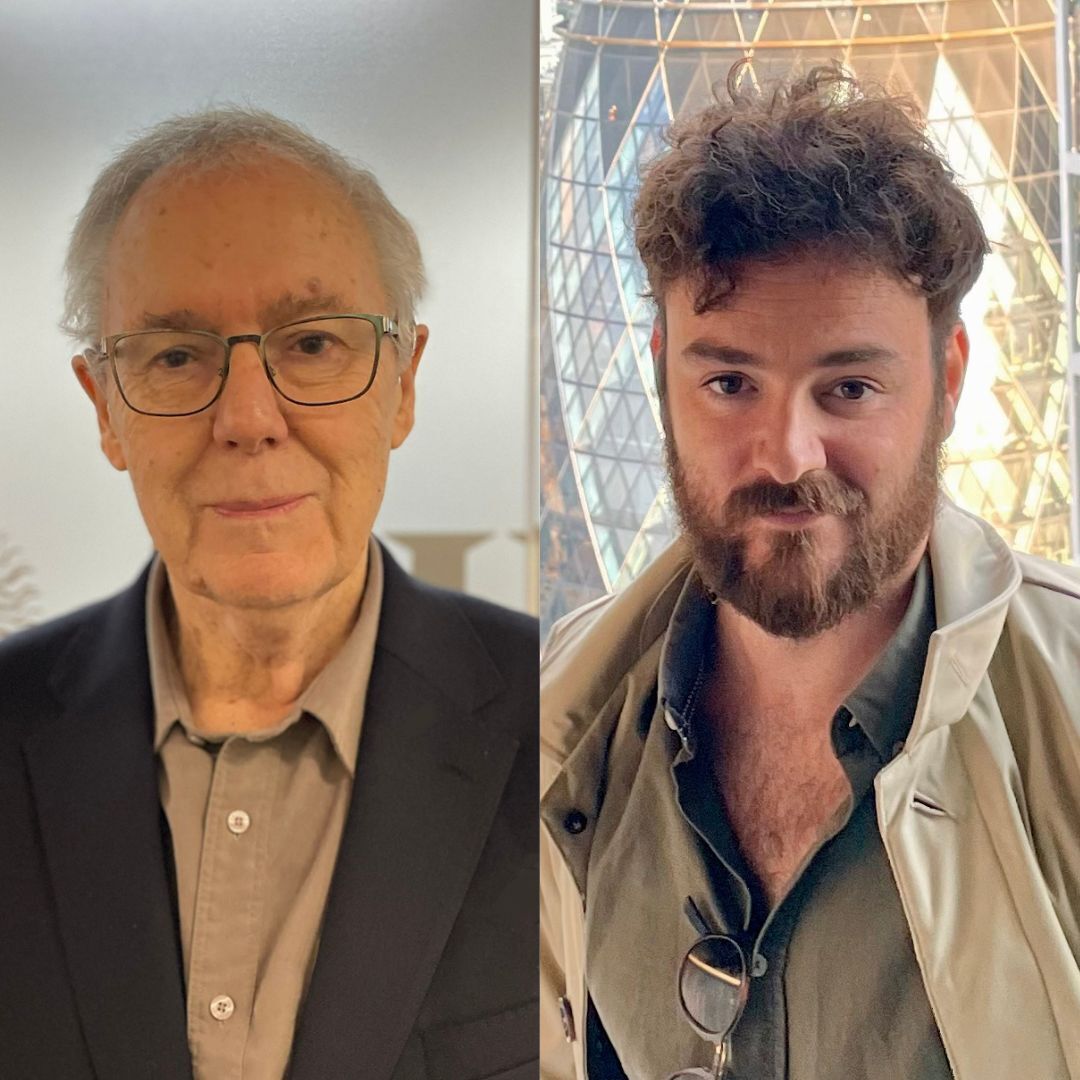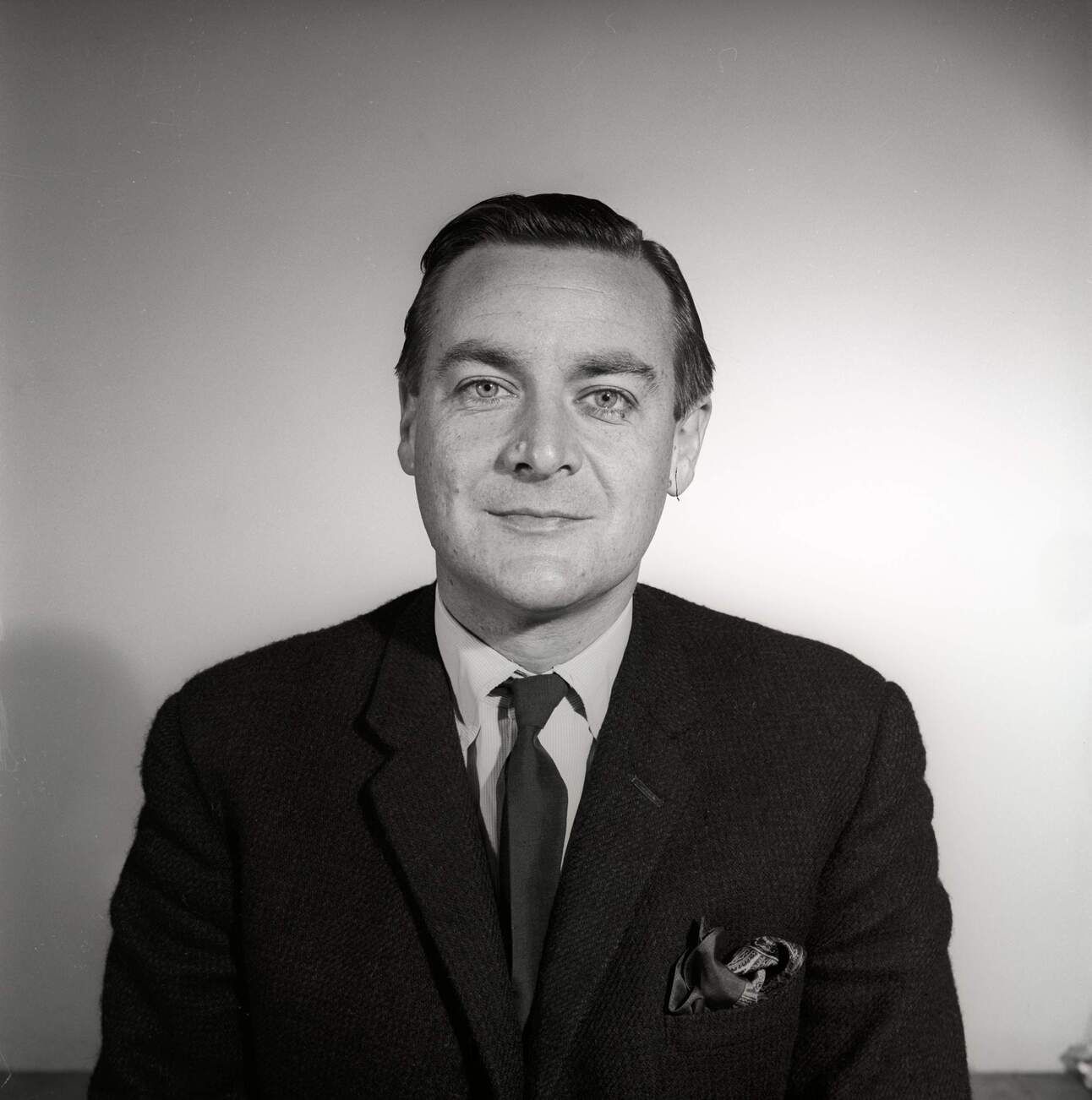- Debrief - The undercover dispatch
- Posts
- Spies in the Press: Unraveling a Cold War Mystery
Spies in the Press: Unraveling a Cold War Mystery
A conversation with Emanuele Midolo, the investigative journalist who solved a Cold War spy mystery.

Picture a Cold War-era foreign correspondent: impeccably dressed, armed with a notepad, slipping into embassies and backroom bars in far-flung capitals. It sounds like a scene from a spy novel and sometimes, it was. In this issue, we speak with investigative journalist Emanuele Midolo about his new book, Murder in Cairo: Solving a Cold War Spy Mystery. Midolo cracked the real-life cold case of David Holden, a top Sunday Times reporter murdered in Cairo in 1977. His investigation uncovered espionage secrets and a cover-up, shedding light on the longstanding intersections between journalism and spying. In our conversation, Midolo shares how he reopened this 46-year-old mystery alongside veteran reporter Peter Gillman, and offers insights on how spies have used journalism as cover and what that legacy means for reporters today — a topic we also explored in one of the first issues of Debrief.
Today is Friday, July 11th, and alongside this newsletter, we’re releasing a new episode of Debrief – The Undercover Dispatch Podcast, where you can listen to our conversation with Emanuele Midolo, recorded just days ago:
This issue was written by Sacha and edited by Luigi.
In This Issue of Debrief:
From Sicily to the Sunday Times
Emanuele Midolo’s journey into investigative journalism spans multiple countries. Born in Sicily, Midolo first cut his teeth as a young reporter in Paris. “But I wanted to become an investigative journalist, and so I left for the City,” Midolo recounted. In London, he earned a master’s in investigative journalism at City University and threw himself into reporting on international corruption.
Midolo honed his craft following money trails and power brokers. His early work involved exposing how illicit wealth flows into London’s real estate market, at a time when, as Midolo quipped, “London is possibly... the money laundering capital of the world.” After a stint writing about business for Forbes, Midolo joined The Times and Sunday Times in 2020. It wasn’t long before he stumbled upon an old mystery in his own newsroom’s history, one that would propel him into the world of espionage.
Murder in Cairo

Cover of "Murder in Cairo", co-authored by Peter Gillman and Emanuele Midolo.
On a warm December night in 1977, David Holden, the chief foreign correspondent for The Sunday Times, landed in Cairo to cover high-stakes Middle East peace talks. By the next morning, he was dead. Holden’s body was found dumped by a roadside with a bullet through his heart. This shocking turn of events reverberated far beyond the newsroom. “This was not a war correspondent who had been killed by a landmine or shot dead by soldiers. This was an assassination,” Midolo explained of the reaction at The Sunday Times. In an era when journalists weren’t usually targeted, the deliberate killing of such a prominent reporter sent shockwaves through the media world.
Reeling from the loss of their star correspondent, The Sunday Times sprang into action. Legendary editor Harold Evans dispatched the paper’s elite Insight investigations team to find out who killed Holden and why. Six top reporters fanned out across the Middle East, retracing Holden’s final steps and chasing down leads. The Insight team had cracked headline-making cases before, from unmasking Soviet spies to exposing corporate scandals, yet this mystery stubbornly eluded them. After a year of dogged inquiry, even the best journalists of the 1970s came up empty. “They couldn’t cope, it was the one story that got away,” Midolo said, describing how Evans and his team were haunted by their failure. Evans later admitted that not solving Holden’s murder was “the biggest regret of my journalistic career”.
Cracking a Cold Case
For decades, David Holden’s murder remained an unsolved enigma, a cold case buried in the archives. That is, until Emanuele Midolo took it upon himself to reopen the investigation. In 2020, shortly after he joined The Sunday Times, Midolo learned of the case from Peter Gillman, one of the original Insight investigators who had chased the story in 1977. “When Peter told me the full story, I was completely blown away because it sounds stranger than fiction,” Midolo recalled. Here was a 46-year-old mystery involving spies, an assassinated journalist, and unanswered questions that had tormented a previous generation of reporters. Midolo saw a chance to finally connect the dots.

Peter Gillman and Emanuele Midolo
He reached out to Gillman, now a veteran in his 80s and proposed teaming up to finish what was started all those years ago. Gillman had compiled a 200-page report back then, full of leads and clues that had never yielded a culprit. Midolo pored over this treasure trove of information and then leveraged modern tools and fresh interviews to dig deeper. “I started investigating the case using this 200-page report, Peter had this incredible material, I could build upon, and I would say we cracked it together,” Midolo said, crediting their cross-generational partnership. It took some convincing to get the older reporter back on the story, “a bit of nudging,” as Midolo put it, but soon the two journalists were working in tandem. Despite the decades between them, their methods meshed seamlessly. The fundamentals of investigative reporting hadn’t changed much since the 1970s: follow your curiosity, ask tough questions, track down sources, and piece together the puzzle. “At the end of the day, the sense of curiosity and the techniques… are the same,” Midolo noted, even if today’s digital tools allow for quicker research.
The Double Life of David Holden
So what had really happened to David Holden? Midolo and Gillman’s persistence paid off. Their investigation uncovered evidence that the respected journalist had been living a secret double life. “There was clearly much more to David Holden than just his career as a journalist,” Midolo hinted. In fact, the truth is worthy of a spy thriller. According to Midolo and Gillman’s findings, Holden “was no mere foreign correspondent but a spy.” He had been recruited by the KGB even before he became a journalist, and later covertly entangled with the CIA – quite possibly acting as a double agent. This revelation casts his 1977 murder in a new light: if Holden was working in the shadows of Cold War espionage, it’s likely he was killed because of the secrets he knew or the loyalties he betrayed.

David Holden
The twists didn’t end there. As Midolo dug into archives and interviewed sources, he found signs of a cover-up that stretched into the halls of British intelligence. “There’s the murder itself, and then there is what we think was an extensive cover up by the British intelligence services,” he told us. Incredibly, someone inside The Sunday Times back then may have been part of that cover-up. Midolo discovered that one of the paper’s own staff, a former intelligence officer hired during the Cold War era, had likely sabotaged the original investigation from within. (That individual has since passed away, leaving some lingering questions unanswered.) The ties between journalism and espionage in this saga ran deep: it turns out The Sunday Times’ practice of hiring ex-spies as foreign correspondents dated back to the 1950s, when none other than Ian Fleming (James Bond’s creator, and a former Naval intelligence officer) served as the paper’s foreign editor. In a sense, Holden’s fate was the culmination of two colliding worlds, reporter and spy, and the dangerous game he was playing remained hidden for decades until now.
Spies in the Newsroom
Midolo’s investigation of the Holden case underscored a broader historical truth: journalists and spies have often mingled in the shadows. During the Cold War, journalism made for an almost perfect cover. “Journalism used to be a great cover for spies, you could go anywhere, you could ask questions without anyone wondering why,” Midolo explained. Intelligence agents could slip into foreign countries under the guise of press credentials, travel freely, and talk to officials and sources without raising alarm. Being a journalist was “the best cover” an operative could ask for. Many infamous spies of the era posed as reporters, blurring the line between news-gathering and espionage. Little wonder that authoritarian regimes grew suspicious of Western journalists, sometimes with good reason.
Today, the landscape has changed, though echoes of that distrust remain. “I think it’s way less frequent now because the profession has changed so much,” Midolo said, noting that the golden age of globe-trotting foreign correspondents is largely over. In the 21st century, spies have new disguises and high-tech tricks, they’re more likely to be hackers than reporters. “If you ask me, the spies today are actually found in IT, I don't think we as journalists are as valuable as we used to be,” he added.
Yet, old habits and suspicions die hard. Governments like Russia still eye journalists with paranoia, as seen in the recent arrest of a Wall Street Journal correspondent in Moscow on espionage charges. Midolo understands where that paranoia comes from: “So many journalists [in the past] would actually work as spies, how can you blame people for thinking that?”. His hope, however, is that by unearthing stories like David Holden’s, we confront this fraught history head-on. Speaking openly about the blurred lines between journalism and espionage is the first step toward truly separating them. It’s a matter of trust, but also of responsibility. Journalist cannot afford ambiguity.
At Debrief, we draw a clear line. Because our job isn’t to collect secrets for others, but to expose them in the public interest.
That's all for now.
Until the next Debrief,
Luigi & Sacha
If you've come across an undercover investigation you think we should feature, share it with us here:
👉 https://forms.gle/1JbqMBJUfoRU9MBp7
If you have suggestions, questions, tips (or insults), drop us a line at:
👉 [email protected]
If you enjoyed this newsletter, pass it along to your friends using this link:
👉 https://debrief-newsletter.beehiiv.com/
Follow us on Instagram, occasionally we'll upload content different from the newsletter:
👉 https://www.instagram.com/debrief_undercover/
We've also launched a podcast featuring interviews with the authors of memorable undercover investigations:
👉 https://open.spotify.com/show
And if that's still not enough, join our Telegram channel, where we can keep the conversation going:
👉 https://t.me/debrief_undercover

Reply